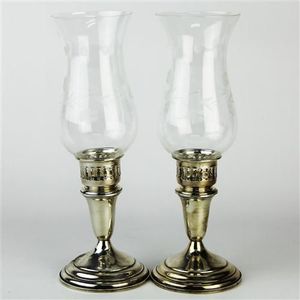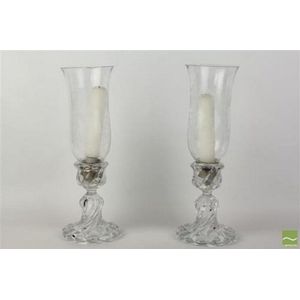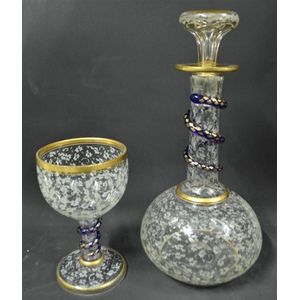French Bronze and Crystal Pedestal Vases
You must be a subscriber, and be logged in to view price and dealer details.
Subscribe Now to view actual auction price for this item
When you subscribe, you have the option of setting the currency in which to display prices to $Au, $US, $NZ or Stg.
- Bronze - An alloy of copper and tin, traditionally in the proportions of about 9 parts of copper to 1 part of tin.
The discovery of bronze in Western Asia in the 4th century enabled people to create metal objects which were superior to those previoulsy possible because of its strength and hardness, and it has been used throughout the world for weapons, coins, tools, statuary and other decorative items.
It is very fluid in a molten state, and its hardness, strength when set, and non-corrosive properties makes it most suitable for casting sculpture. - Alabaster - Alabaster is soft natural stone used for statuary, with a similar appearance to marble, but easier to work with. As it is softer than marble, an item made from alabaster can be scratched with a metal object, and an alabaster item does not polish to a high surface gloss like marble.
Alabaster objects can be semi-translucent. Alabaster occurs in a pure white form and also with veining from dirt. Colours vary from white through yellow and pink to brown. The veining is usually green or black but can be multicoloured.
Being semi-translucent, alabaster is often used for the bowls of figural lamps, with the figure itself being either alabaster or marble. - Everted - An everted rim is an outwardly turning or flaring outwards rim, as seen the rims on jugs, vases, bowls and dishes.
This item has been included into following indexes:
Visually similar items

American sterling silver based pair of etched glass hurricane lanterns having pierced screw in inserts, to convert to candlesticks, with weighted bases. Maker Towle. Height 28 cm

Two Georgian air twist drinking glasses c.1750 - 1760. Height 15.8 cm & 20 cm

Baccarat crystal Hurricane lamps with moulded and acid etched bambons shades sitting upon swirl scalloped bases. Marked to base. Height 36 cm

A Victorian glass decanter & matching glass, with frosted flower & blue & gilt detail, height 15 & 30 cm
